Dracula orchid: description and rules of care
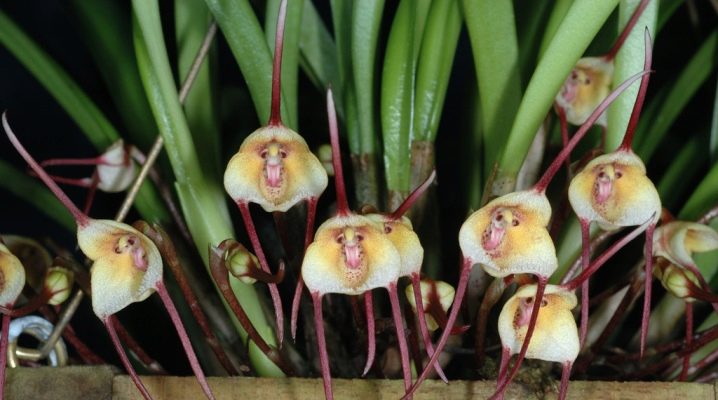
An incredible and very beautiful subspecies is the Dracula orchid variety. It was brought from distant tropical countries, and has become one of the favorite among professional gardeners, as well as ordinary amateur flower growers.
Description
The genus of epiphytic plants, to which the Dracula orchid belongs, in most cases grows on tree trunks, rarely on the ground. This flower belongs to the orchid family. These types of plants are especially popular in the American tropics. The genus unites about 122 kinds of flowers.
Various species of the orchid family were brought to Europe by Heinrich Reichenbach, and the Dracula variety was discovered in 1870 by Benedict Roesnel.
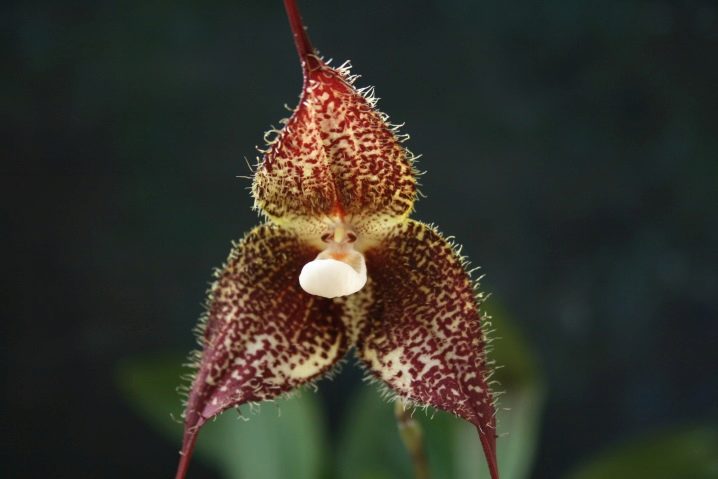
Literally the name "Dracula" means "little dragon", "dragon son", and is explained by an unusual flower. It consists of three sepals, collected at the base and forming the likeness of a bowl. The petals at the tips are elongated and protrude outward, often covered with hairs.
The main feature of a flower is determined by the presence of a modified petal - "lips", which to a greater extent forms its external resemblance to the face of a monkey. Hence, another unofficial name of the plant is formed - "monkey face" or "monkey orchid". If you look at the orchid from a distance, you get the impression that there is a small monkey in front, and not a plant.
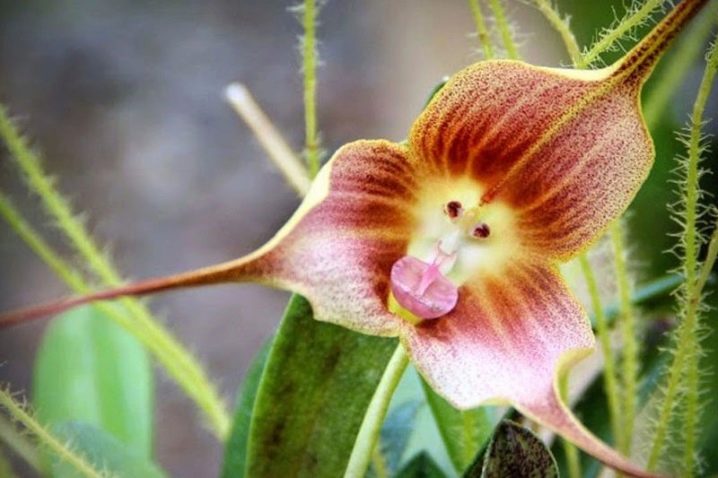
In general, orchids are short plants with rich green foliage. Shoots grow vertically, sometimes sagging. The aerial roots that the flower has are periodically intertwined with sagging peduncles.
The flowers are cupped and can have a variety of colors and outlines, depending on the species. One of the characteristic features of Dracula is the absence of pseudobulbs. These are unusual loose growths, similar to a bulb, with the help of which epiphytic plants store moisture. The orchid copes with this task with the help of dense leaves of a spongy structure.
Under good conditions, the Dracula orchid can bloom at any time, regardless of the season. In its natural habitat, the flower is pollinated by insects, as well as some species of bats, small rodents.
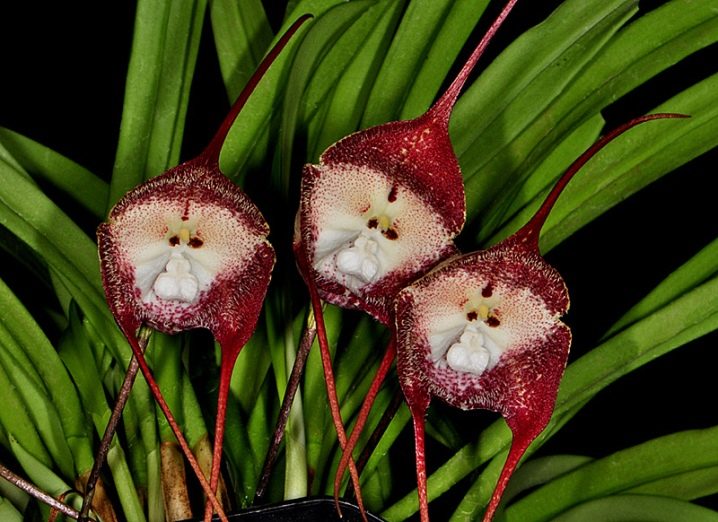
Features of home growing
The unusual and decorative variety Dracula was a very valuable acquisition for collectors. Initially, the Dracula orchid was grown mainly in greenhouses, in a special microclimate and conditions that are as close as possible to their natural habitat. But the growing popularity of the flower still made it possible to grow it at home.
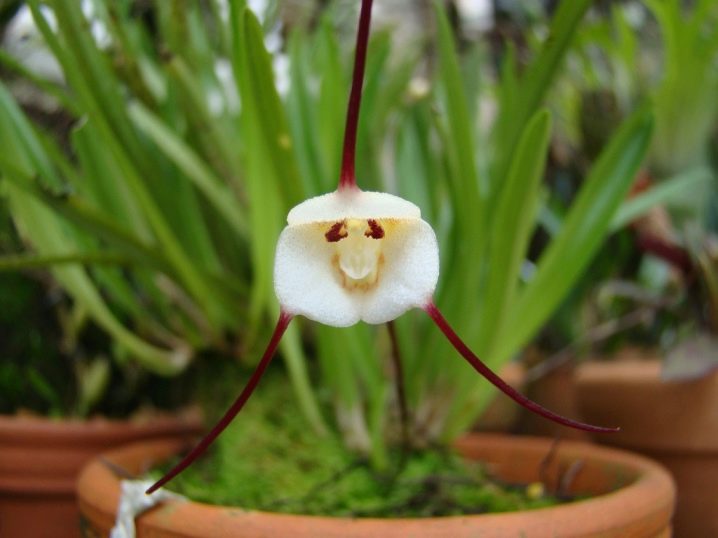
The "monkey" orchid, although similar to its congeners, the phalaenopsis, unlike the latter, categorically does not tolerate bright sunlight and high temperatures.
It is worth considering that in case of insufficient light, the flower will not bloom at all. Dracula prefers diffused lighting or partial shade. The optimal place for installing a flower pot is windows facing east or southeast.
Accommodation is allowed in the northern part, however, additional artificial lighting will be required during autumn and winter.
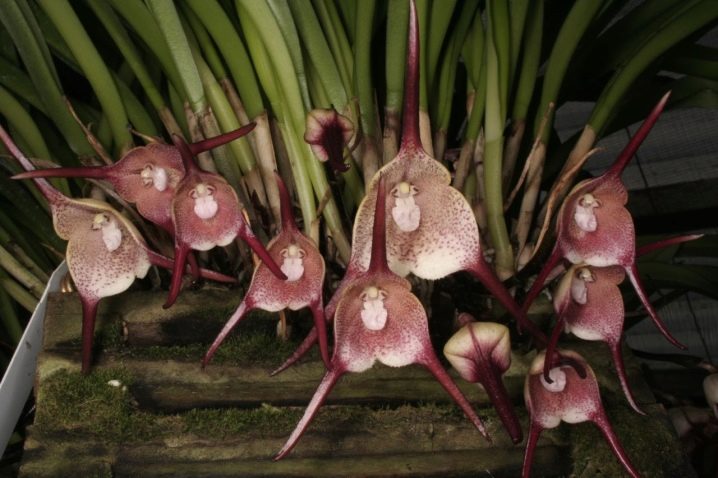
For perfect adaptation of the plant, it is recommended to grow it in wooden pots, wicker baskets, transparent containers with drainage holes... From the inside, the pots are lined with a layer of sphagnum and filled with a mixture of sawdust, charcoal and crushed coniferous bark.

In its natural habitat, the Dracula orchid grows when the air temperature is low. The most suitable and comfortable temperature for a flower will be +15 degrees, and during spring and summer, orchids can withstand temperatures no higher than + 25 degrees.
In insufficiently ventilated rooms with a constantly high temperature, Dracula can discard even unopened buds and not bloom.
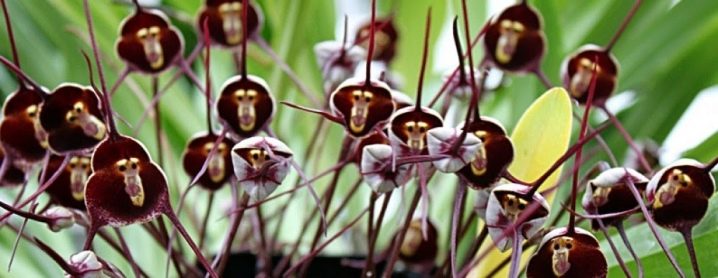
If the temperature regime is observed, the level of air humidity is very important for the "monkey" orchid.
The ideal humidity is 80-85%, but in no case below 60%.
You can increase the humidity in the room where the flower grows by installing containers with wet expanded clay.
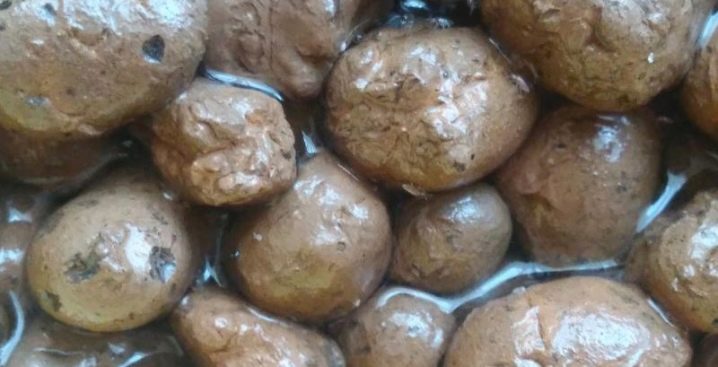
It is also allowed to put a humidifier near the plant.
It is necessary to water the orchid with soft water, without harmful impurities. The best option for Dracula would be melt or rainwater. Distilled and filtered tap water will also work.... Water for irrigation should be at room temperature.
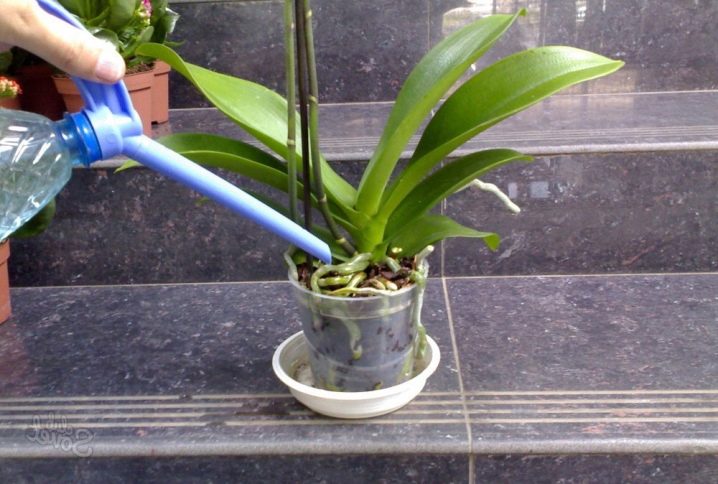
Watering frequency depends entirely on lighting and ambient temperature. It is worth noting that under ideal temperature conditions, the orchid quickly absorbs moisture, but the same amount evaporates from the surface of the leaves. Therefore, when the temperature regime is violated, the evaporation process accelerates, and the moisture absorption process, on the contrary, slows down. Therefore, in warm seasons, the plant needs frequent watering.
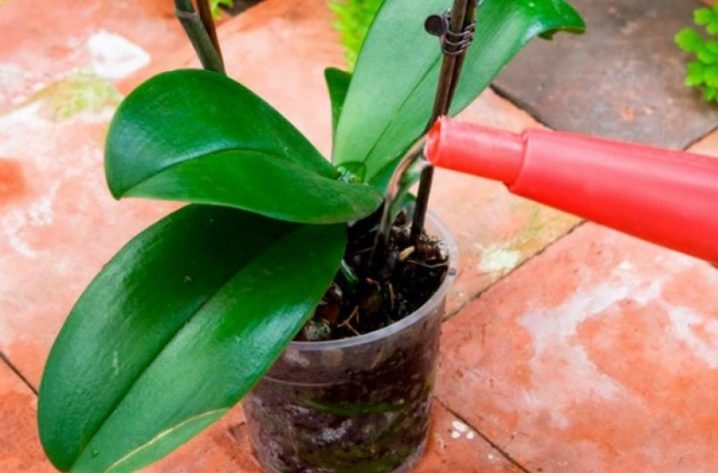
Watering the "monkey face" orchid, it is recommended make sure that the substrate in the pots is moist, but you should not allow prolonged stagnation of water, as this can lead to rotting of the roots and the lower part of the flower. Healthy Dracula roots will be able to tolerate a long period without moisture more easily than excessive moisture.

The plant is especially sensitive to salts contained in most fertilizers, therefore it is better not to fertilize this flower at all than to "overfeed"... Special fertilizers for Dracula are diluted in a 1: 3 ratio and introduced together with water for irrigation. The most favorable period for feeding an orchid is the growing season.
Diseases and pests
One of the common causes of flower disease is non-compliance with the conditions for proper care, for example, drafts, direct sunlight, frequent changes in the location of the flower.
Basically, the Dracula orchid attracts the following types of pests.
- Thrips... Their presence on the plant is determined by the gray color of the leaves and the presence of small dots on them. It is not easy to destroy thrips, the flower is treated with special means - acaricides. For prevention, some growers use garlic tincture spraying.
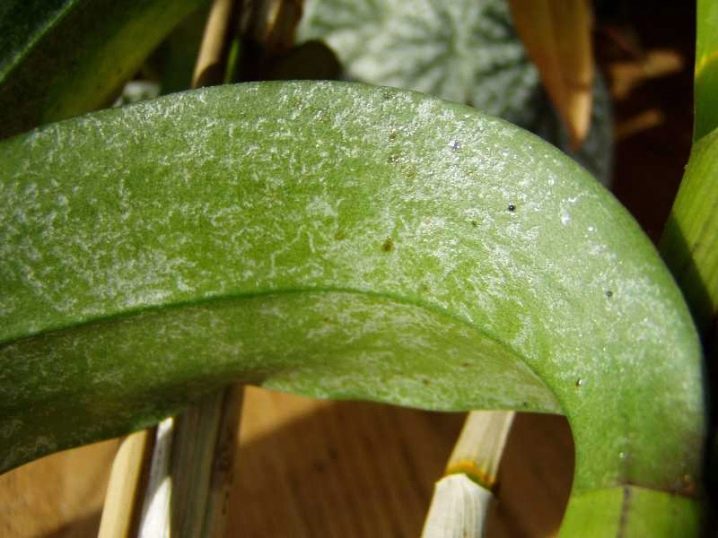
- Spider mite... The infection of the plant with this pest is evidenced by whitish dots at the bottom of the leaves and a thin web enveloping them. Spider mites are destroyed with a special insecticide.

- Whitefly... In the warm season, Dracula can be attacked by a whitefly, its larvae can be seen on orchid leaves. Treatment of foliage with a decoction of calendula will help to cope with the "uninvited guest".
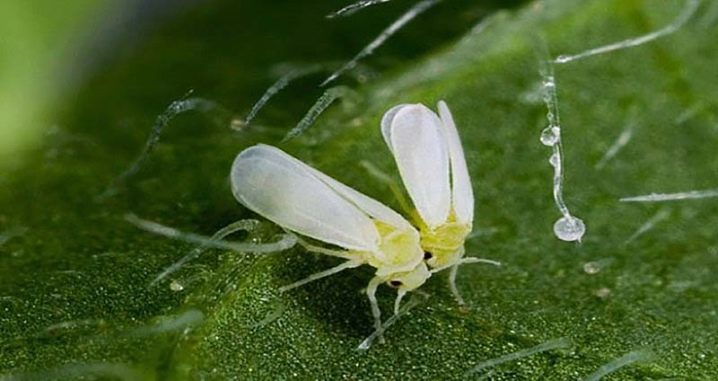
- Shield... These insects and some other types of aphids that infect the leaves of the plant feed on their sap. To destroy the pest, the infected areas are wiped with cotton wool dipped in vegetable oil. A weak solution of dishwashing detergent has the same property.
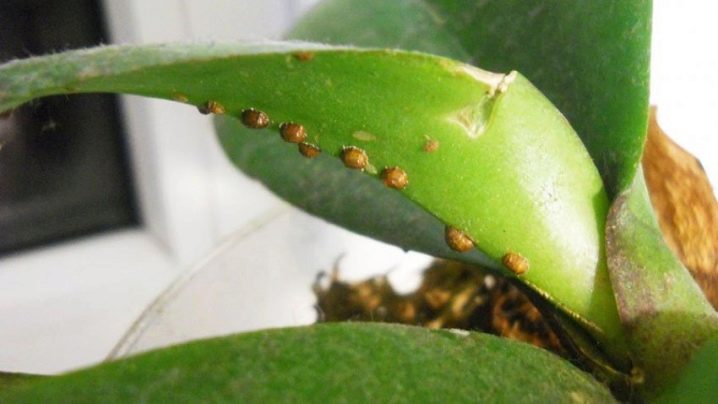
The appearance of bright brown spots on the foliage, rot, drying of the flower are signs of fungal infection. For treatment, the orchid is isolated from other plants to exclude the possibility of infection, then the flower is treated with a fungicide.
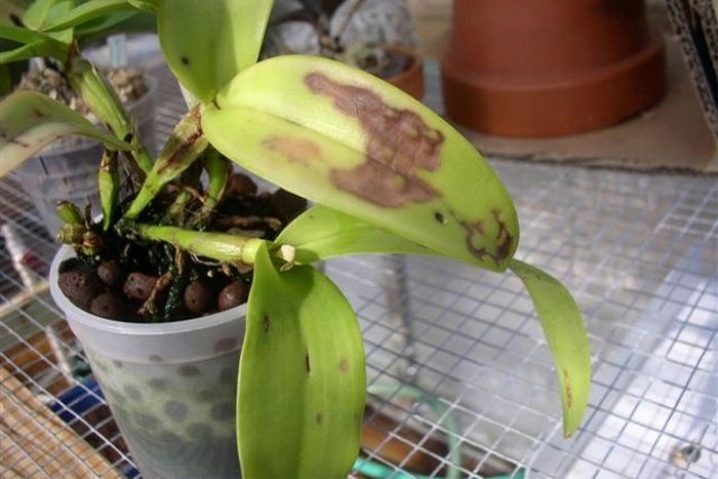
The presence of bacterial rot is indicated by brown watery spots that spread quickly when the temperature drops. At the initial stage of infection, small spots are treated with charcoal or copper-containing preparations.If the disease progresses, in order to avoid its further spread to other flowers, Dracula must be destroyed.
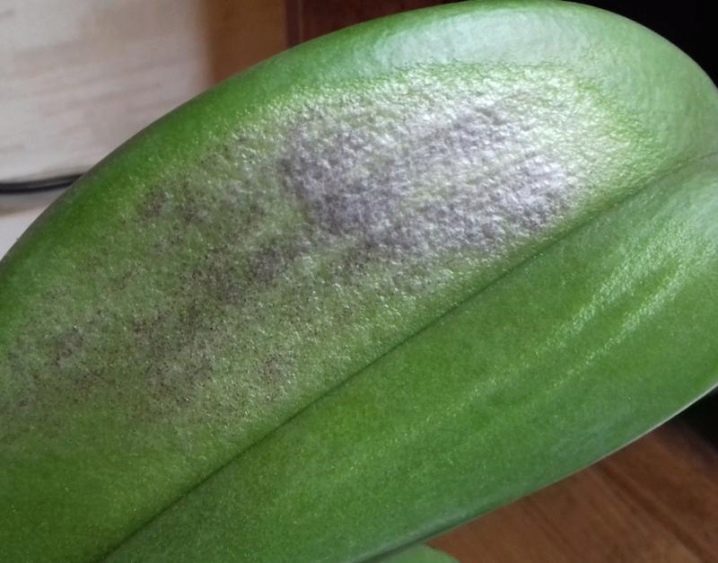
In order to grow Dracula at home on your own, the following conditions must be met:
- adequate lighting;
- nutrient substrate;
- temperature regime;
- sufficient watering and moisture level;
- timely feeding and pest control.
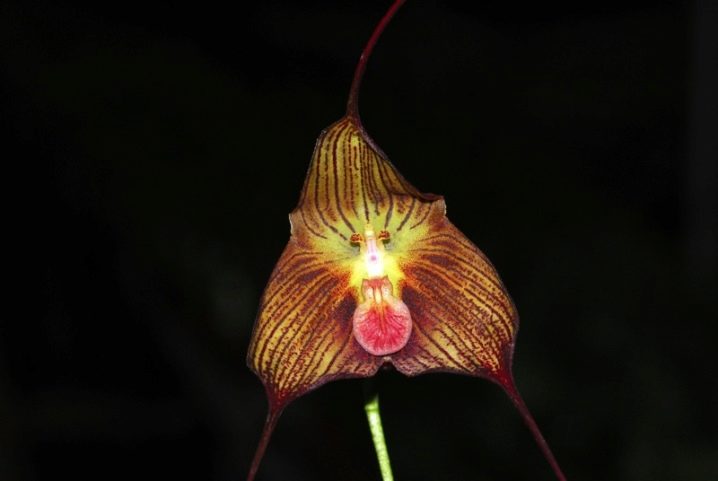
It is necessary to transplant the "monkey" orchid 1 time every 3 years, not more often.
The transplanting process is carried out in the spring, when the orchid already has leaves, but does not bloom yet. In case of depletion and acidification of the nutrient mixture, excessive growth of roots or their decay, the transplant should be carried out as soon as possible.

Dracula does not need regular pruning. When the peduncle dries up and there are no new buds on it, it is cut off, and the plant is transplanted and watering is reduced.
Reproduction
Reproduction of an orchid at home is carried out in a vegetative way, namely by dividing a large mother plant into parts. With a sterile instrument, the flower is divided into parts with at least 5 buds. Places of cuts must be treated with charcoal powder. Each branch is planted separately in the prepared mixture. The planting substrate is the same as for adult plants.
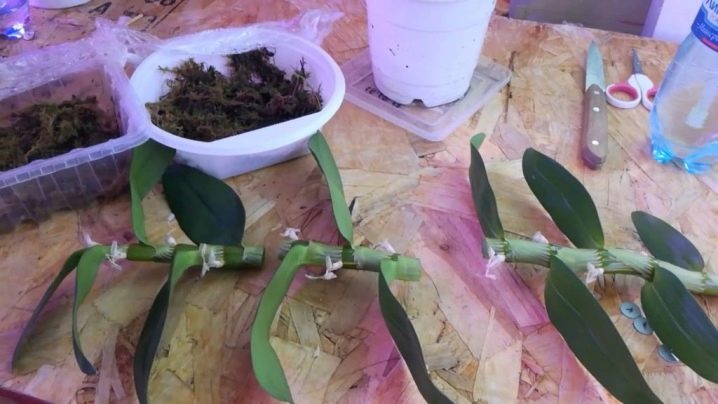
Given the description of the plant, we can conclude that the Dracula orchid is a rather whimsical and demanding flower. To grow it at home, it is necessary to bring the content of the orchid as close as possible to the conditions of its natural existence. However, strict adherence to all the rules for caring for the plant will allow you to admire its rare beauty all year round.
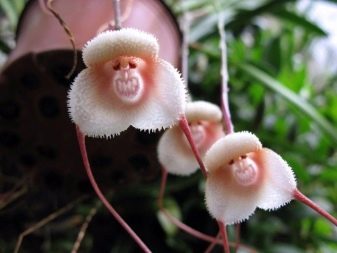
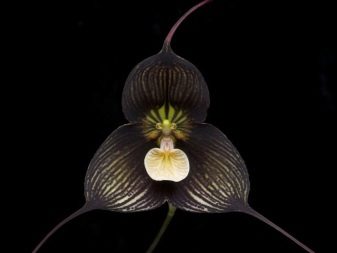
Learn more about the Dracula orchid in the video below.































The comment was sent successfully.